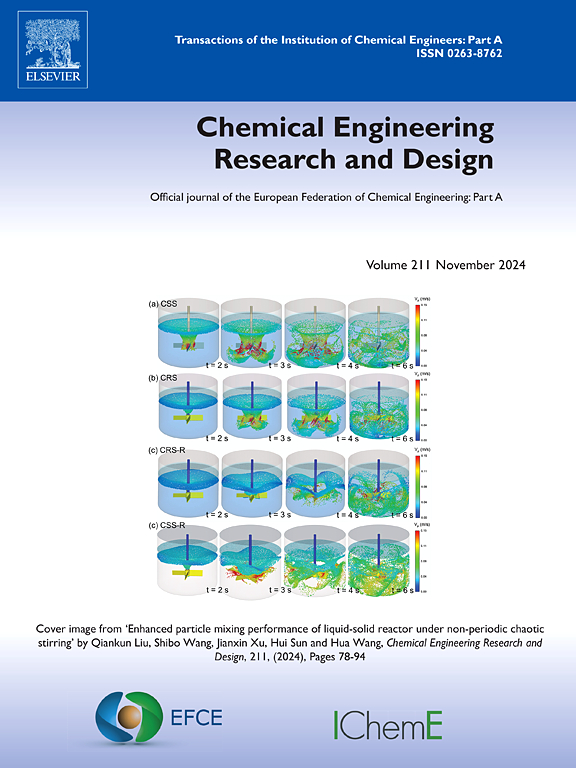Self-utilization of indigenous materials in plateau areas: Peroxymonosulfate activation by manganese modified barley straw biochar for efficient degradation of enrofloxacin
IF 3.7
3区 工程技术
Q2 ENGINEERING, CHEMICAL
引用次数: 0
Abstract
In this study the indigenous materials in plateau areas were used to cope with the challenge of increasing antibiotics pollution in Qinghai-Xizang Plateau. The barely straw was chosen as the raw material to prepare the manganese modified biochar (XBSMBC) and then combined with peroxymonosulfate (PMS) to set up the PMS/XBSMBC system to treat the enrofloxacin (ENR) in water. The study showed that there was a higher PMS activation and thus ENR degradation of the manganese modified biochar prepared from the barley straw than those from Xizang wheat straw and Henan wheat straw. The preparation parameters of the XBSMBC, including the mass ratio of barley straw to manganese and the pyrolysis temperature, for the PMS activation as well as the ENR degradation were reviewed and found that the 1:1 and 900 °C were the optimal preparing conditions (XBSMBC-900 (1:1)). The influence of the XBSMBC-900 (1:1) additive amount, PMS dosage and solution initial pH on the ENR degradation was also ascertained. Results of quenching experimental studies and electron paramagnetic resonance demonstrated that ENR degradation in the PMS/XBSMBC system was achieved by a combined effect of SO4·-, ·OH, ·O2- and 1O2. Four possible pathways of ENR degradation were provided, and the toxicity analysis predictions were applied to infer the validity of the PMS/XBSMBC process for the ENR solution treatment.
高原原生物质的自我利用:锰修饰大麦秸秆生物炭活化过氧单硫酸盐高效降解恩诺沙星
本研究利用高原地区的土生物质来应对青藏高原日益严重的抗生素污染。以秸秆为原料制备锰改性生物炭(XBSMBC),并与过氧单硫酸根(PMS)结合,建立PMS/XBSMBC体系处理水中恩诺沙星(ENR)。研究表明,与西藏麦秸和河南麦秸相比,大麦秸秆制备的锰改性生物炭具有更高的PMS活性和ENR降解能力。考察了XBSMBC的制备参数,包括大麦秸秆与锰的质量比和热解温度,对PMS活化和ENR降解的影响,发现1:1和900℃是XBSMBC-900(1:1)的最佳制备条件。确定了XBSMBC-900(1:1)添加量、PMS投加量和溶液初始pH对ENR降解的影响。淬火实验研究和电子顺磁共振结果表明,在PMS/XBSMBC体系中,ENR的降解是由SO4·-、·OH、·O2-和1O2的共同作用实现的。提供了四种可能的ENR降解途径,并应用毒性分析预测来推断PMS/XBSMBC工艺处理ENR溶液的有效性。
本文章由计算机程序翻译,如有差异,请以英文原文为准。
求助全文
约1分钟内获得全文
求助全文
来源期刊

Chemical Engineering Research & Design
工程技术-工程:化工
CiteScore
6.10
自引率
7.70%
发文量
623
审稿时长
42 days
期刊介绍:
ChERD aims to be the principal international journal for publication of high quality, original papers in chemical engineering.
Papers showing how research results can be used in chemical engineering design, and accounts of experimental or theoretical research work bringing new perspectives to established principles, highlighting unsolved problems or indicating directions for future research, are particularly welcome. Contributions that deal with new developments in plant or processes and that can be given quantitative expression are encouraged. The journal is especially interested in papers that extend the boundaries of traditional chemical engineering.
 求助内容:
求助内容: 应助结果提醒方式:
应助结果提醒方式:


